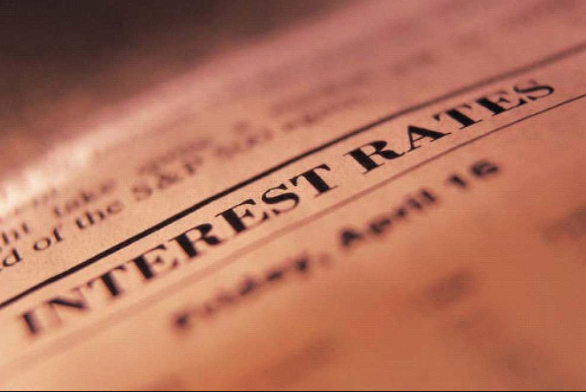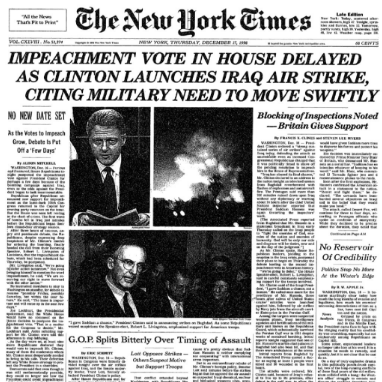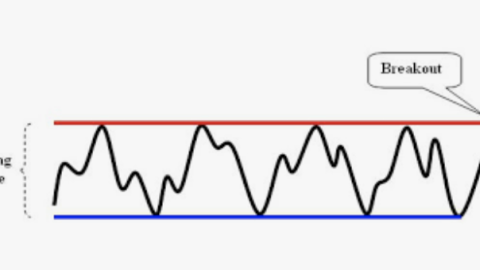If you trade the within the VIX complex you are likely following a trend that has tapped into the “the nature of volatility”, which is to decline over time. But the question many may have not considered is why, why is that the nature of volatility. For most people trading the VIX complex or volatility they are doing so with VIX-leveraged Exchange Products or VIX-ETPs. These ETPs are derivatives of derivatives of derivatives of…well I’m not going to keep typing the same ole thing as you get the picture. So for the sake of keeping the conversation on the level it’s best to understand that if you’re trading these products, you’re trading something that is constructed or correlated to take advantage of another something, the VIX, which in itself is nothing more than a numerical reading of human psychology drawn from interactions with the S&P 500 (SPX) to display the forecast of the majority psychology. And to possibly sum up that unnecessarily elongated sentence…the genesis of implied volatility or IV.
I’m often confronted with many questions about trading volatility, day in and day out. “Why does m4-m8…, when do you think the VIX…, have you back tested if…, what options duration…, if the VIX goes up 50% where…,in a 2008-like crisis…, how do you hedge against…, have you modeled for… and so on and so on and so on. Having a trading history within the volatility realm spanning 6 years what I’ve learned is there are a vast many ways to answer any of the questions posed. The shortcomings for most active questions on trading the VIX complex, especially those desiring to understand historical VIX moves, modeling and forecasting is that they prove to be “exercises”. I’m sure many people believe these exercises to be worthy exercises and in the event they help an individual trader understand the nature of volatility, I would concur. But if the individual trader is performing these exercise in order to extrapolate a better forecasting model to drive greater profitability…well I reach back to the tonality of this narrative and ask that individual what will be the prevailing or dominant human psychology of the markets tomorrow or 30 days from now. Nobody knows although we can assume and participate in these exercises by plugging variables into a model. But committing to that exercise of “plug n play” is no more than an exercise in designed bias. What we’re really doing is hoping to derive at a statistical probability for VIX outcomes.
There is limited to no viable ability for forecasting or modeling-out the VIX. As noted earlier, the VIX is nothing more than a numerical value or summation derived from human psychology. I couldn’t propose to tell someone what the prevailing and majority of market participants will be feeling and acting upon regarding the S&P 500 options market tomorrow let alone the 30-day forward period covering the duration of a VIX Futures contract. Economists and analysts have long since characterized the VIX as “mean reverting” for which I have always found to be incomplete in its characterization. If the VIX is derived from what are essentially S&P 500 strangle options and the S&P 500 has only gone up over the span of its existence, then the VIX cannot be modeled as a mean reverting instrument, only. At some point the VIX must ALSO find new low readings. Characterizing the VIX as mean reverting wasn’t incorrect for the duration of time preceding more recent years, it was simply incomplete.
In 2017, I authored an article forecasting the VIX. “Wait, wait, wait a second Seth, but you just said….!” Yes, I know what I just said about the viability for modeling and forecasting the VIX. In 2017 the article titled The VIX Will Achieve Its Lowest Levels Ever…In Time, predicted a new low reading would be found for the VIX. This was less about forecasting than it was about understanding the nature of volatility being such that it decays over time. And all the market conditions were ripe for my forecast utilizing the aforementioned nature of volatility thesis. The human psyche is such that it simply becomes desensitized to like stimulus when exposed to that stimulus with repetition. No financial crisis will mirror the former financial crisis of 2008 through its duration and as such the VIX will not read the same as it had in 2008. Why you might ask? Well, because we’ve been there, done that, born witness to the rise from the ashes and desensitized ourselves from the stimuli. No, more than likely when the reality of fundamental economic metrics show a like deterioration to 2008, the equity markets will not only take longer to react, they will not react according to history. Nonetheless, the end result may very well be the same.
- The point is very simple, understanding the human psyche and its reflection in the VIX forces reactions from an individual trader:
- Accept the nature of volatility defying the viability of modeling activities.
- Find a way to justify modeling activities because others do so.
- Fail to ask one self what term structure will be tomorrow and recognize its necessary value determination for forecasting.
- Accept that at best an individual trader will minimize profit potential through risk management due to human psychology that is evoked from models and back testing.
Vance Harwood of Sixfigureinvesting.com recently stated the following with regards to modeling the VIX. The is titled A better Way to Model the VIX
There are a lot of models for the CBOE’s VIX. None of them are particularly good at predicting what the VIX will do tomorrow, but they can be useful in predicting general behaviors of the VIX.
What Vance is explaining is that a VIX model can be used to understand the general nature of the VIX over time. So if anybody suggests that they have a model for the VIX that works with forecasting the future of the VIX in specific terms or circumstances…run quick and far! It’s great for understanding, not for modeling, not for forecasting. That has been the focus of my VIX/volatility studies over the years, to figure out the general nature of the VIX. What I found through my studies and due diligence was that most analysts and VIX market participants were not completing the characterization of the general behaviors of the VIX. The VIX is not just mean reverting; it is in a perpetual search for greater decay or finding new lows. This could be the only conclusion based on the VIX’s correlating summation. It’s not a matter of if the VIX will find new lows, but when. That new low was found in 2017 and in the years to come a new low will also be found so long as one believes in the construct of the U.S. economic and financial systems.
So why do so many people practice the exercise of back testing, modeling and/or forecasting? I have my theories for certain and for which I don’t desire to offend the masses. What I choose to believe, which may be found contradictory to some, is that any such activities/exercises can derive a value from the activity itself. I was never going to be a world-class track athlete, but participating in the sports taught me the value of endurance, teamwork, setting and accomplishing goals. To be certain, nobody can predict with long lasting efficacy what tomorrow’s VIX Futures’ term structure will be. Unfortunately, nobody can effectively predict for the timing and severity of the next Black Swan and how it will find reactions on day 1 and through its duration of existence or the value of contango at the onset of that event. What finds itself much greater ease is the simplistic understanding that Black Swan events are rare, but net dramatically negative and nowhere anyone wants to be found holding the proverbial bag. It’s a risk, a known risk and why the VIX trade is so…bipartisan LOL!
While there are a host of different strategies for which to choose to participate in the VIX complex and with VIX-leveraged ETPs, none can fully insulate a trader from the impacts of a steep and rapid market decline. No modeling based on the VIX’s history can determine or predict for an individual traders psychology and/or ability to whether storms. Shorting common shares demands of itself a large cash hoard or liquidity holding. Options demand the willingness to wake up into a Black Swan event and finding a “broken option chain”. I see many individual investors swear up and down by their strategy and yet they’ve not experienced the brutality of shorting volatility. They’ve not awakened to their short exposure drawing down on their portfolio by 50% even before the market opens. They’ve not awakened to the failure of the CBOE to derive a VIX quote that sets off a chain of derivative fall out, the decay of human logic and psychology. They’ve not awakened to a broken options chain whereby bid/ask quotes were $0/$25.
What many volatility strategies should serve to do is take advantage of the time value when trading volatility. But it should also be known that most strategies fail on the basis of practicality. Simply put, psychology reins over the VIX complex and all its participating members. No strategy, model or forecast is or could possibly be derived for the masses, as the masses generally don’t share a like psychological make up and execution discipline.
This narrative is not meant to dissuade individual investors from participating within the VIX complex or according to the nature of volatility, but rather to invite thoughtful participation, practice and sharing. Charts can be made to look fancy, authentic and intelligently constructed. Equations can be asserted for construct and defining mechanism transmission of VIX derivatives. Lastly, paragraphs can be disseminated in the most longwinded manner to express concerns, logic and demands. But none of the above can provide answers for tomorrow’s volatility; they can simply be found desiring to as defined by the nature of volatility.
There will, there definitely will come a time where simply getting out or participating adversely and with brevity to the nature of volatility is optimal. But those who will know when that time is at-hand have studied, articulate and understand the fundamentals of economic cycles and the composition of an economic cycle. Moreover, like “VIX events” no two economic cycles are alike, they may have similarities, but they are not the same. It’s the nuances and abstraction of nuances for the betterment of market participation within different cycles that find some investors performing better than others.
At Finom Group we don’t claim to have all the volatility answers, we simply do a terribly decent job of understanding the nature of volatility and how to optimally participate in the VIX complex given market conditions that are juxtaposed with the fundamental underpinnings of the economy. You’re welcome to come and join us and terribly decently trade along side our terribly decent volatility traders and investors. No where did I put that mic?
Tags: SVXY TVIX UVXY VIX










Hi Seth, really intuitive way of explaining the play on psychology and risk management systems. Thank you!
VIX trade psychology and fundamentals 101! Definitely a must-read for anyone involved or considering becoming involved with VOL trading.